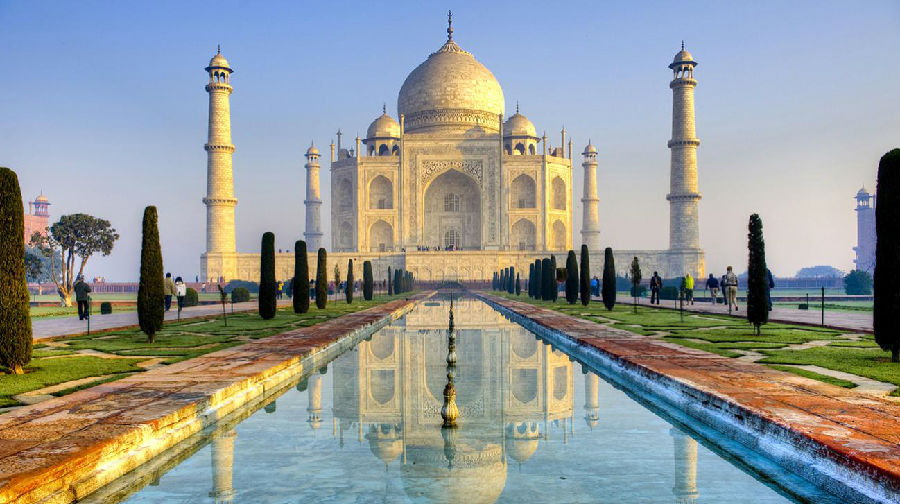One of India's most famous landmarks, the Taj Mahal, is planning to place a three-hour cap on visits to avoid overcrowding at the popular tourist location.
泰姬陵是印度最著名的地标建筑之一。为避免这一著名景点过于拥挤,印度计划将游客每次游览泰姬陵的时间限制在3小时以内。
The enormous white marble tomb, listed as a UNESCO World Heritage Site, can attract at least 50,000 visitors a day on the weekend, according to a spokesman for the Archaeological Survey of India, which oversees the Taj Mahal.
庞大的汉白玉陵墓泰姬陵被联合国教科文组织列为世界遗产之一。据泰姬陵监管部门、印度考古调查委员会发言人说,周末每日到访泰姬陵的游客至少有5万人。
"Sometimes people end up spending a whole day at the Taj. This creates a situation where there are too many people," the spokesman D·N·Dimri told CNN.
发言人D·N·迪姆利告诉美国有线新闻网的记者说:“有时候游客会在泰姬陵里呆上一整天,导致里面人群拥挤。”

"It is being implemented so that the movement of visitors can be regulated. Day by day, the number of visitors are increasing. This is to ensure no untoward incidents or accidents occur."
他说:“我们正实行限时措施,这样游客的活动能得以监管。游客人数每天都在增加。这能确保这里不发生麻烦的事件或者意外事故。”
He added there had been no incidents due to overcrowding at the site.
他还补充说,泰姬陵还没有因为人群过于拥挤发生过事故。
The Taj Mahal was built in the 17th century by Muslim Mughal emperor Shah Jahan to honor his third wife Mumtaz Mahal, who died while giving birth. It was completed in 1648.
泰姬陵始建于17世纪,由伊斯兰教莫卧儿王朝君主沙贾汗为纪念他的第三任妻子--已故皇后慕塔芝玛哈(姬蔓·芭奴的封号)兴建,于1648年竣工。姬蔓·芭奴在生产时去世。
Currently it draws at least seven million visitors every year and was recently described by Tourism Minister Alphons Kannanthanam as "India's pride."
目前每年到访泰姬陵的游客至少有700万人,最近还被印度旅游部长阿尔方斯形容为“印度的骄傲”。













